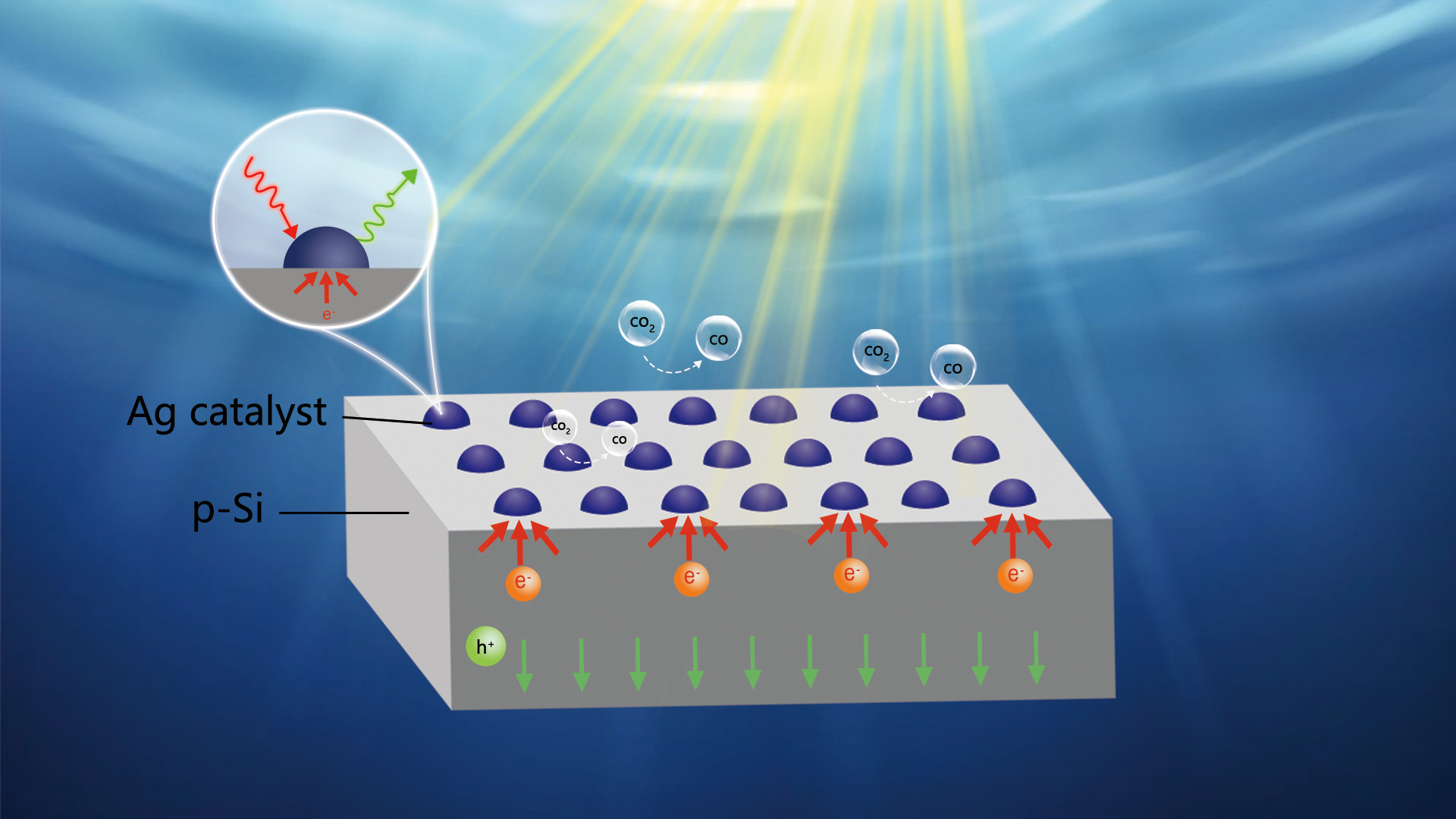Photoelectrochemical (PEC) carbon dioxide reduction (CO2R) technology stands as a promising route for converting CO2 into storable fuels and represents one of the main strategies for achieving stable storage of solar energy and carbon neutrality. Its core component is a photocathode, and silicon (Si) serves as a photocathode material with a wide range of applications due to its near-ideal energy band structure, excellent charge carrier transport properties, and low preparation cost.
However, the rational design of catalyst arrangement on the surface of p-Si photocathode to obtain the highly selective carbon monoxide (CO) target product and high energy conversion efficiency (ηCO) remains a significant challenge.

The research team led by Assistant Professor Meng Lin from the Department of Mechanical and Energy Engineering (MEE) at the Southern University of Science and Technology (SUSTech) has provided crucial insights for engineering high-performance CO2R photocathodes with patterned electrocatalysts, delicately balancing optical reduction and catalyst area to optimize energy efficiencies while capitalizing on the pinch-off effect to reduce the onset potential for CO2R.
To this end, the study introduces a multi-physical model-based framework, selecting the p-Si and Ag as the model photocathode and catalyst, respectively, to quantitatively analyze the interplay among the optical propagation, charge transport, mass transfer, and electrochemical reactions in a PEC CO2R photocathode with patterned catalysts.
Their study, entitled “Performance assessment of photoelectrochemical CO2 reduction photocathodes with patterned electrocatalysts: a multi-physical model-based approach”, has been published in Energy & Environmental Science, one of the world’s leading multidisciplinary science journals.
By comparing three types of interfacial configurations (case 1: bare p-Si, case 2: a layered catalyst, and case 3: patterned catalysts), the effects of the different interfacial configurations on the optics, interfacial carrier transport, and electrochemical activities were firstly elucidated (Fig. 1). In terms of optical properties, case 3 showed an absorption of 62% (only a 5% decrease compared to case 1) and a reflection of 31%, which was between case 1 and case 2. Due to the small enough size of the Ag catalyst on the surface of p-Si photocathode and the inconsistency of the Schottky barrier height between the p-Si/electrolyte interface and the p-Si/Ag interface, the electric field modulation between the two Schottky contacts leads to an increase in the effective barrier height at the p-Si/Ag interfaces. This provides a “low-resistance” transport channel for photogenerated electrons to participate in electrochemical reactions (Pinch-off effect).

Figure 1. Comparison of energy band distributions and optical properties under different types of interfacial configurations
In terms of electrochemical performance, case 3 has a higher CO2R onset potential compared to case 1 due to the Pinch-off effect. It was also found that the JCO (CO partial current density) increased with decreasing the applied voltage due to the increased driving force of the CO2R reaction, whereas further increase in JCO was hindered by optical conditions or CO2 mass transfer due to high local current densities (Fig. 2).

Figure 2. Comparison of electrochemical performance under different types of interfacial configurations
The researchers also assessed the performance of the CO2R photocathode under various operation conditions (solar concentrations and current densities) and design configurations (coverage and size of catalysts) for guiding the design of CO2R photocathodes. The findings revealed that an optimal catalyst coverage of 0.4 can reconcile the interplay between optical reduction and the catalyst’s available surface area, leading to an achievable solar-to-carbon monoxide conversion efficiency (ηCO) of up to 9.6%, and decreasing the boundary layer thickness of the electrolyte to 25 μm can achieve a ηCO of 11.2%.
Ph.D. candidate Yuzhu Chen from the Department of MEE at SUSTech is the first author of this paper. Research Professor Chengxiang Xiang from Caltech is the collaborating author. Assistant Professor Meng Lin is the corresponding author, and SUSTech is the first affiliation.
This work was supported by the National Natural Science Foundation (NSFC), Guangdong Basic and Applied Basic Research Foundation, and the Shenzhen Science and Technology Innovation Commission. The authors also acknowledge the assistance of the Center for Computational Science and Engineering (CCSE) of SUSTech.
Paper link: https://pubs.rsc.org/en/content/articlelanding/2024/ee/d4ee00575a
To read all stories about SUSTech science, subscribe to the monthly SUSTech Newsletter.
Proofread ByAdrian Cremin, Yingying XIA
Photo ByDepartment of Mechanical and Energy Engineering